/topics/water-management
Water Management
Confessions of an OD boy: The need to achieve a sustainable open defacation free intervention
Posted on 24 Dec, 2011 07:58 PMAuthor: Mohanasundar Radhakrishnan
Bangalore World Water Summit invites applications for Bangalore Water Awards – Apply by January 14, 2012
Posted on 21 Dec, 2011 09:18 AM
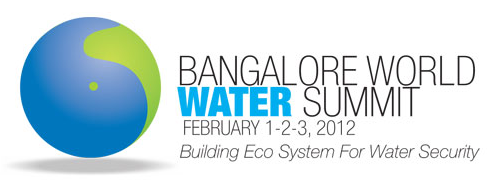
The Centre for Sustainable Development's (CSD) mission is to promote sustainable development by identifying critical issues in the context of the present and the future and addressing them in a manner which will achieve sustainable outcomes. Its programs and methods are designed to promote the involvement of different stakeholders and build capacities to achieve sustainability across sectors. CSD works in close association with various government agencies, scientific institutions and civil society organizations.
The impacts of water infrastructure and climate change on the hydrology of the Upper Ganges river basin – A research report by IWMI
Posted on 18 Dec, 2011 07:03 PM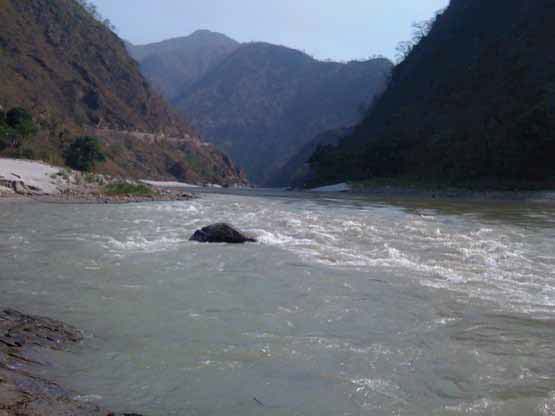 The Ganges river system originates in the Central Himalayas, and extends into the alluvial Gangetic Plains and drains into the Indian Ocean at the Bay of Bengal. In the upstream mountainous regions, hydropower is the main focus of development with mega and micro projects either under construction or being planned in both Nepal and India.
The Ganges river system originates in the Central Himalayas, and extends into the alluvial Gangetic Plains and drains into the Indian Ocean at the Bay of Bengal. In the upstream mountainous regions, hydropower is the main focus of development with mega and micro projects either under construction or being planned in both Nepal and India.
After the main river channel reaches the plains, it is highly regulated with dams, barrages and associated irrigation canals. All this infrastructure development and abstractions affects the river’s flow regime and reduces flows, which, in turn, impacts downstream water availability, water quality and riverine ecosystems. Furthermore, there are concerns that climate change is likely to exacerbate the water scarcity problem in the Ganges Basin. Therefore, modeling the hydrology of the basin is critical for estimation, planning and management of current and future water resources.
Yamuna-Elbe - A public art and outreach project at the Yamuna riverscape in Delhi launched on 5 November, 2011
Posted on 18 Dec, 2011 02:02 PMGuest post by: Amita Bhaduri
The public art outreach project was organized by the Max Mueller Bhavan in association with the Government of Delhi and the Goethe-Institut (Hamburg, Germany) as a part of the “Year of Germany in India” programme opened on 5th of November, 2011. The art exhibition which continued till the 19th of November co-curated by artist Ravi Agarwal who is also a practicing environmentalist (Director, Toxics Link) along with German artist, Till Krauser attempted to create a pulsating synergy between the Yamuna and Elbe rivers.
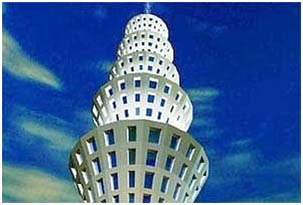 Gigi Scaria’s - The fountain of purification
Gigi Scaria’s - The fountain of purification
Photo courtesy: Rocky Thongam
This is a 24 ft installation representing a four storey apartment complex that draws Yamuna water, purifies it at various levels and dispenses it from the top in the form of a fountain.
Traditional water bodies of Delhi
Posted on 18 Dec, 2011 01:56 PMSohail Hashmi, an author, film-maker, one of the founders of the Safdar Hashmi Memorial Trust (SAHMAT) and a true Dilliwala on 5 December 2011 at the India Habitat Center. The presentation woven around photographs of the city's step well
Strengthening rural livelihoods – A report by IDRC
Posted on 13 Dec, 2011 05:17 PM This report prepared by International Development Research Centre (IDRC) examines how information related constraints in poor rural areas are being overcome and how information technology is being employed to the benefit of people in South Asia.
This report prepared by International Development Research Centre (IDRC) examines how information related constraints in poor rural areas are being overcome and how information technology is being employed to the benefit of people in South Asia.
Poor people are constrained by limited access to information and poor communications technology. The research looked at the use of ‘information communications technologies’ (ICTs) in providing agricultural extension services, getting timely market price information, finding out about rural wage labour opportunities, helping rural communities to build a sustainable asset base and understanding crop diseases and soil nutrition.
The results of the research bring together rigorously tested practices and methods of applying ICTs for improving rural livelihoods. Each research study has investigated how and to what extent a specific ICT intervention made a difference. Together it shows how ICTs have empowered rural people and transformed livelihoods in agriculture: by filling information gaps, raising awareness, building skills and extending social networks.
The focus was on agricultural communities, as Asia’s poor and middle-income countries have primarily agriculture-based economies. However, a broader ‘livelihoods’ approach has been taken to ensure that we observe the variety of ways ICTs can have an effect on rural communities. The scope of the research took into account the range of on-farm and off-farm productive and reproductive activities that support farming households and communities.
Performance audit of food security schemes in Orissa and Uttar Pradesh – A report by Centre for Environment and Food Security
Posted on 13 Dec, 2011 04:55 PMThe schemes covered under this audit include, (a) Public Distribution System (PDS), (b) Antyodaya Anna Yojana (AAY), (c) Mid-day Meals (MDM), (d) Integrated Child Development Services (ICDS), (e) National Old Age Pension Scheme (NOAPS), (f) National Family Benefit Scheme (NFBS), (g) Annapurna, (h) National Maternity Benefit Scheme (NMBS), (i) Swarnajayanti Gram Swarozgar Yojana (SGSY), and (j) National Rural Employment Guarantee Scheme (NREGS).
The Mullaperiyar dam debate - An issue of safety versus rights?
Posted on 12 Dec, 2011 10:40 AMThe issue that has been making headlines in the last few days has been that of the continuing debate between the states of Kerala and Tamil Nadu over the Mullaperiyar dam. This debate has opened up a number of issues related to the ownership and use of water between the two states of Tamil Nadu and Kerala in the context of the current changes and the loss of relevance of the laws and decisions made during the colonial rule; the water sharing, irrigation and power generation needs of both the states; and the recent concerns on the safety of the dam in Kerala versus the urgent irrigation needs of the agricultural sector in Tamil Nadu.
A view of the Mullaiperiyar dam on Kerala-Tamil Nadu border at Kumili.Photo: Vibhu
Image Source: The Hindu
This article sheds light on the history of the Mullaperiyar dam and the background for the current deadlock between the two states over the dam. The current deadlock between the two states over the dam is essentially not a dispute for water, but has its roots in the colonial times, and has to do with the need to come to terms with the agreements and decisions made in those times with changing economic, political and environmental contexts and concerns about the safety of the dam in Kerala versus the irrigation needs of the farmers in the state of Tamil Nadu.
9th Everything About Water Expo 2012 , Earth Water Group, February 9-11, 2012, Greater Noida, Delhi
Posted on 11 Dec, 2011 02:33 PMOrganizer: Earth Water Group
Venue: India Expo Mart, Greater Noida, Delhi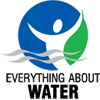
Description:
EA Water Pvt Ltd is India’s leading information and marketing solutions company in the field of water and wastewater management. Our print magazine, website, e-newsletters, seminars, training programmes and other offerings are extremely popular with water professionals. Our mission is to use technology and customer focus to attain renaissance in the Indian Water Industry. In our 10 years of existence, we have built a huge relationship base and credibility in the water community. 9th Everything About Water Expo 2012 from 9-11 February, 2012 at India Expo Mart, Greater Noida, Delhi NCR. The International Conference at the same venue will also have renowned experts and famous speakers on water and wastewater management from all over the world. More than 850 delegates from industry and government would also attend the program.
Fishery statistics – A manual by Ministry of Statistics and Programme Implementation
Posted on 11 Dec, 2011 10:08 AM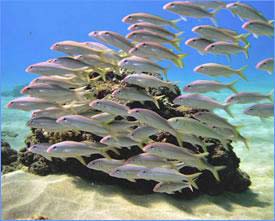 It has a ready to use reference guide on methodological aspects of data (metadata) based on harmonized concepts and methodologies that facilitate international comparison and help in aggregation of statistics to derive meaningful conclusions. The adoption of the methodology suggested in this manual will go a long way in facilitating data aggregation and data comparison both at intra-regional levels, including international levels.
It has a ready to use reference guide on methodological aspects of data (metadata) based on harmonized concepts and methodologies that facilitate international comparison and help in aggregation of statistics to derive meaningful conclusions. The adoption of the methodology suggested in this manual will go a long way in facilitating data aggregation and data comparison both at intra-regional levels, including international levels.
The section on both marine and inland fisheries consists of four chapters and appendices. Chapter I highlights the significance of the sector, need for statistical standards and development of statistical system of the sector. Concepts and definitions are placed in Chapter II. Chapter III presents sources of data and details of methodology being adopted for generating these data. Chapter IV conveys the suggestion for ensuring quality standards. Lastly, appendices include estimation methods, forms and schedules and major resources available in the Indian waters.







